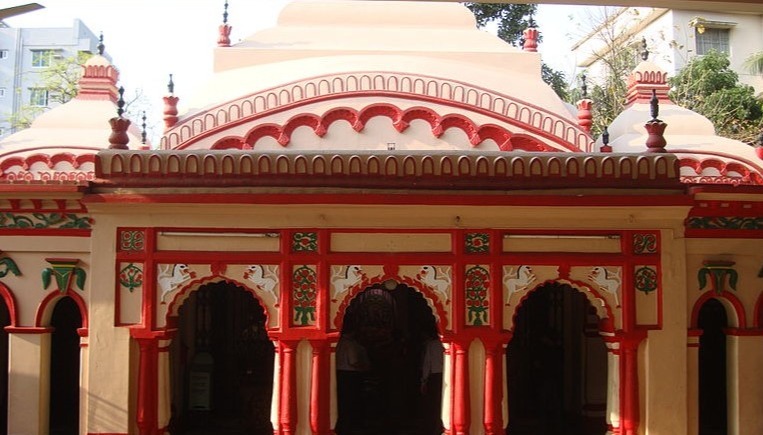Prime Minister Narendra Modi’s two-day Dhaka visit on March 26 to join the golden jubilee celebrations of Bangladesh’s independence will not only be a diplomatic tour but also mark a significant cultural connect between the two countries as a pilgrimage to ancient Hindu temples in the country figures on his itinerary.
On his first visit abroad in 15 months, PM Modi will hold talks with Bangladesh Prime Minister Sheikh Hasina and call on President Mohammed Abdul. He will also deliver a speech at the National Parade Ground on March 26 as part of the grand event.
The two leaders will jointly inaugurate the Bangabandhu-Bapu digital exhibition later that day and are likely to flag off a direct passenger train service between Dhaka and New Jalpaiguri in West Bengal.
Modi will pay tribute to Bangabandhu Sheikh Mujibur Rahman at his mausoleum in Tungipara on Mar 27, the second day of his trip, where Prime Minister Sheikh Hasina will receive him,
Bangladesh Foreign Minister AK Abdul Momen told journalists.
He is scheduled to visit two temples in two districts on the same day, “first, he will go to the holy Joshoreshwari Kali Temple in Satkhira, and offer puja at the ancient shrine that dates back to the time of Pratapaditya or Lakshman Sen."
According to the legends, Jashoreswari Kali Temple at Shyamnagar is one of the 51 Shakti Peethas of the Hindu community. Shakti Peetha are important shrines and pilgrimage destinations in Shaktism, the Goddess-focused Hindu tradition.
The story behind the Shakti Peeth is that after the self- immolation of Goddess Sati, her husband Shiva picked up her remains and performed the celestial dance of destruction. Vishnu, in an attempt to stop this destruction, used the Sudarshna chakra on Sati’s corpse, causing her body to tear apart and fall in different spots across the world. Each of the spots where a part of her body fell is called a Shakti Peeth. While the majority of them are in India, seven are in Bangladesh, three in Pakistan, three in Nepal and one each in China and Sri Lanka.
During his last visit to Bangladesh in 2015, Modi had offered prayers at the famous 12th century Dhakeshwari temple, the other revered place for the Hindu community in Bangladesh. One of the 51 Shakti Peethas, the name "Dhakeshwari" means "Goddess of Dhaka" and experts said the Bangladesh capital derived its name from Dhakeshwari.
Last year, India and Bangladesh had jointly renovated one of the oldest temples Sree Sree JoyKali Mata Temple at Lalbazar in Natore district of Bangladesh. At that time, The Bangladeshi minister Zunaid Ahmed Palak had said that they had built Natore as a role model of development. India will continue to stand by Bangladesh in the coming days in this endeavour.
Modi will also be visiting Orakandi in Gopalganj, Bangladesh Foreign Minister AK Abdul Momen told the Bangladeshi media,“Orakandi is the birthplace of Harichand Thakur, founder of the Matua sect and it is considered the holiest place for the Matua sect. The Matua community holds significance in the cultural ethos of Bengal.
The officials of the Indian High Commission in Bangladesh have already visited Orakandi to lay the groundwork for Modi's visit, said Matuacharya Padmanabha Thakur, head of Bangladesh Matua Moha Mission, according to Bangladeshi newspaper Dhaka Tribune.
While no official count is available, community leaders put their population at 3 crore. The Matua Mahasangha, a religious reforms movement and a sect, was formed by Harichand Thakur in East Bengal in the mid 1800s. Harichand’s grandson P R Thakur established West Bengal’s Thakurnagar as headquarters of the sect after the partition in 1947.




















